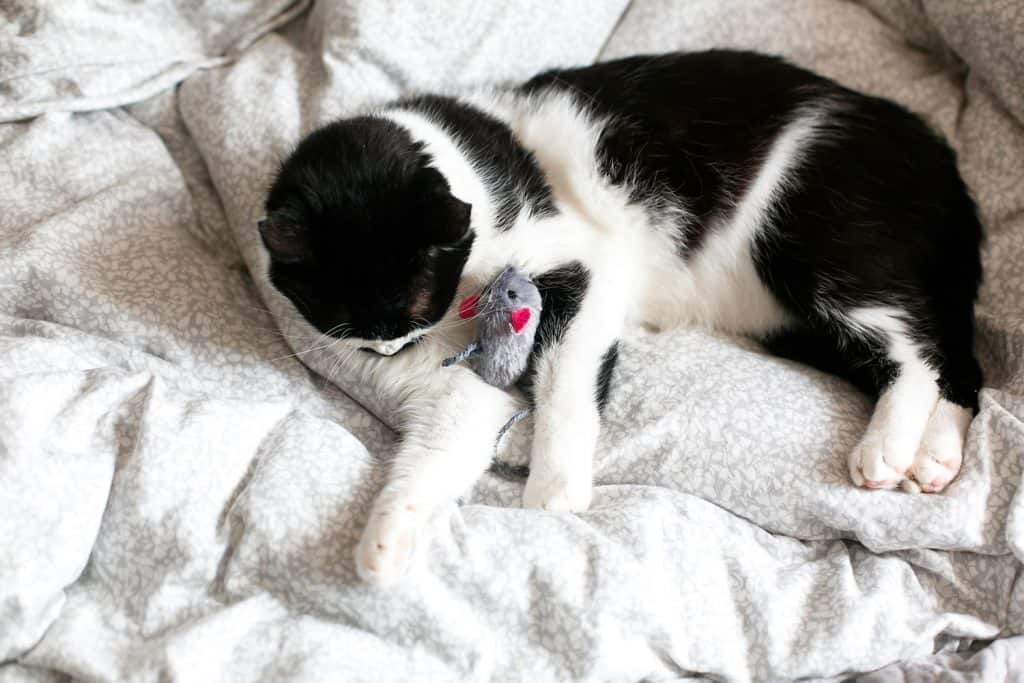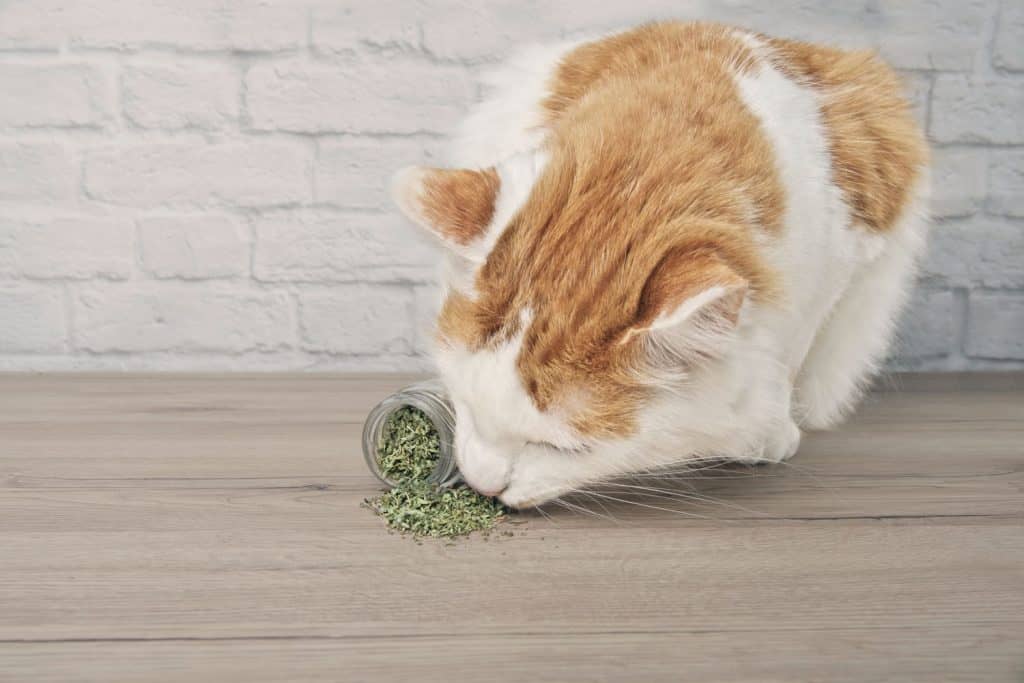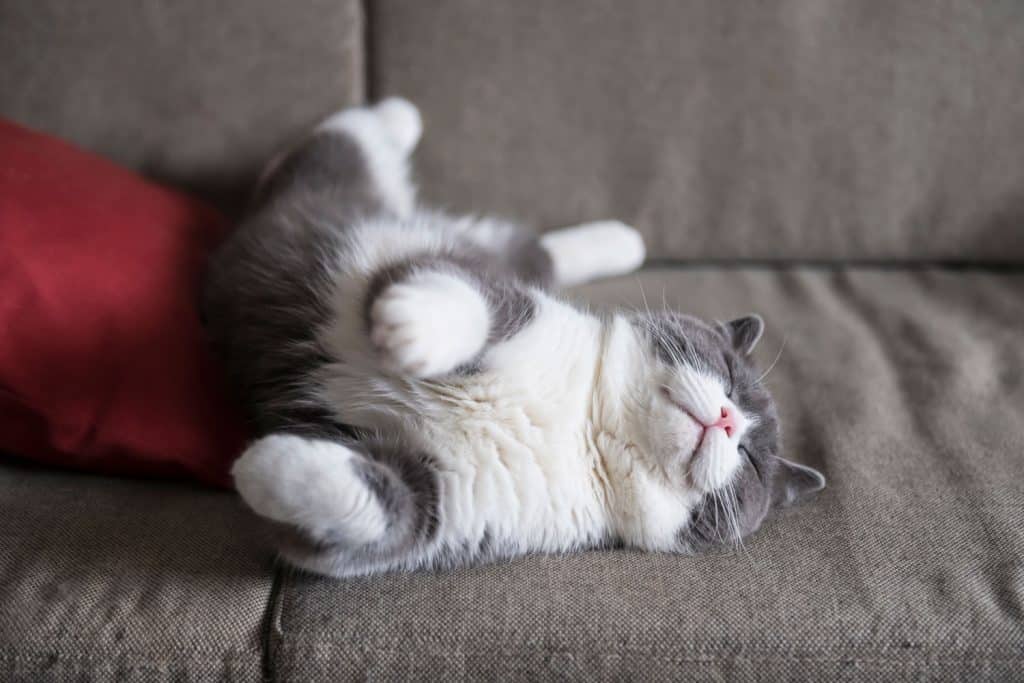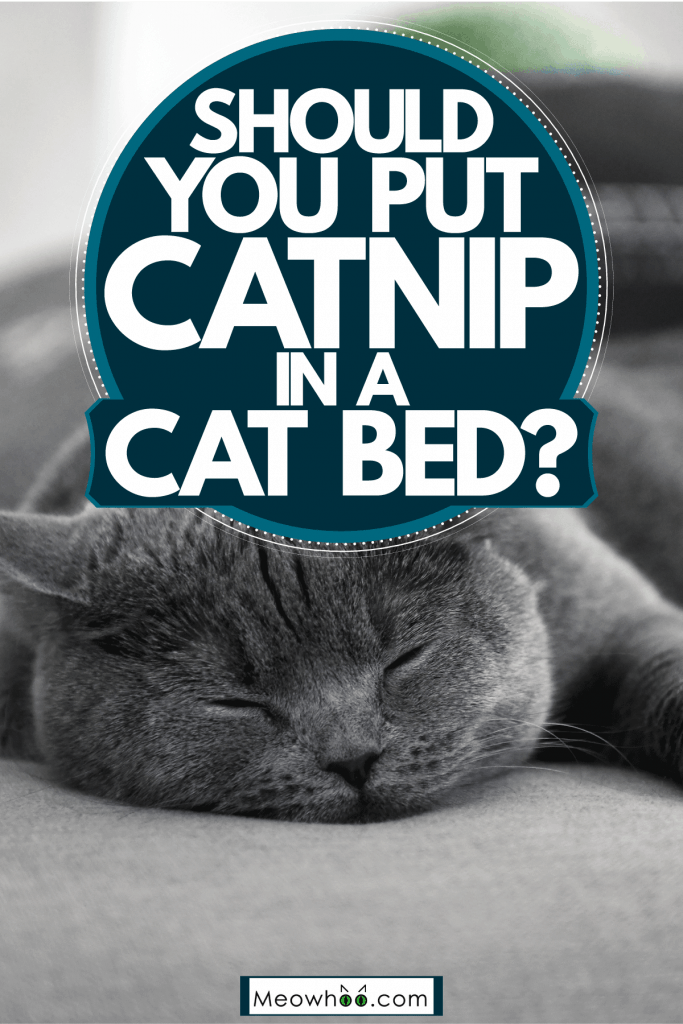Tried to make your cat sleep in its new bed but to no avail? Wondering if you should put catnip in a cat bed? Then you're in the right place.
In this article, you will learn more about catnip, including its potential effects and how it could possibly help coax your pet into the comfort of their designated snooze spot.
Together with input from industry experts, we explore a range of topics. From the dual nature of catnip as a stimulant and a sedative, to how and when to introduce catnip to your pet.
We'll also explore your pet's preference for one sleeping location over another, including why they might suddenly abandon their bed.
Read on as we share invaluable tips and tricks, as well as solutions to getting your pet to embrace their new bed.
Catnip And Cat Beds: A Fascinating Combo Or A Mismatch?
You bought a cat bed for your pet feline, but your pet doesn’t want to sleep in it. Now you’re wondering if you should put catnip in the cat bed.
In general, it’s not a good idea to put catnip in your cat’s bed. But you can still do so. Just take note that if you use catnip to help your cat sleep on their bed, it’s best to let your pet play with the substance first in another scenario.
The effects of this substance can vary, based on what your cat does with it. Catnip can become a sedative if chewed or eaten, but it can also become a stimulant if sniffed.

Is Cat Bed A Good Location To Offer Catnip?
A cat’s bed can be a good location to offer catnip, particularly if your pet doesn’t find their sleeping quarters appealing.
Take note that it may take a few tries before you can get your feline to sleep on their bed successfully, even with the help of catnip.
Start by sprinkling some fresh catnip on the cat bed. Your cat should move to the cushion after catching the plant’s scent. Take note that this method will only help your cat find a bed more alluring than before.
Putting catnip on the bed using a strict schedule will train your pet to spend more time in bed. However, making the cat sleep in their bed with the help of catnip is another story.
Check out this Bedsure Cat Bed on Amazon.
Does Catnip Help Cats Sleep?
Catnip may or may not help cats sleep. Many factors are at play that promote differences in the effects of catnip in cats.
According to the book, Feline Behavioral Health and Welfare, nepetalactone, as the active ingredient in catnip, produces euphoric or mind-altering effects to many cats.
For instance, some cats may go into a deeply relaxed state after consuming a bit of catnip. On the other hand, some felines may become hyperactive after sniffing the plant’s active ingredient.
Another possible scenario is that your cat might be immune to the allure of nepetalactone.
You can test the effects of the substance on your cat by letting your pet play with a catnip toy. Another option is to sprinkle a fairly small amount of catnip in the cat bed to see how your pet reacts to the plant.
Take a look at these Legendog catnip toys on Amazon.
Is Catnip A Stimulant Or A Sedative?
Catnip can be a stimulant and a sedative, depending on the method. It becomes a stimulant if your cat smells the nepetalactone. If so, your pet may become more playful than before.
Some signs of hyperactivity because of catnip include rolling on the ground continuously, having the munchies, and running around the house.
On the other hand, catnip becomes a sedative if your cat consumes the ingredient.
In this case, the animal might lie in a single spot for several minutes. Additionally, significant drooling and purring may occur.

When Should I Give My Cat Catnip?
It’s best to give your cat catnip during the daytime while household cats can still retain the predatory instincts of their wild ancestors. Offering catnip can release those hunting personalities, allowing your feline to become more active than before.
Nevertheless, giving your cat catnip at night can promote various disturbances, regardless of the effects of the plant.
If the catnip acts as a stimulant, your pet may run around the house at night, increasing the risk of falling objects. If the catnip acts as a sedative, the animal may meow ceaselessly.
Check out this Cat Crack catnip on Amazon.
Why Won't My Cat Sleep In Her Bed Anymore?
Different reasons exist as to why your cat isn’t sleeping on its bed anymore. These reasons can range from the bed having a different smell to the cushion being in the wrong place. Let's take a look.
The Bed Doesn’t Smell Right
According to an article from PAWS Chicago, cats have over 200 million sensors in their noses. In comparison, the average human being only has 5 million.
Therefore, cats can identify more smells than most humans. Detecting the off-putting smell can become a reason why your pet no longer wants to sleep in its bed.
The Bed Is Too Comfortable
Too much comfort can be detrimental to enticing cats to sleep in their beds. Take note that different cats have varying personalities.
If your pet likes to sleep on hard surfaces, then the animal won’t find the comfy bed alluring. If so, a reasonably comfortable cat tree might be a better option than a fluffy bed.
Look at this Hey-Brother cat tree on Amazon.
The Bed is in the Wrong Place
The best location for a cat’s bed is where your pet sleeps frequently. For example, your feline likes to sleep near the window in the living room, especially since many cats like to sleep near light and heat sources.
If so, this place would be ideal for the cat bed.
How To Get A Cat To Sleep In Its Bed?
Aside from sprinkling some catnip in the cat bed, you can also take advantage of certain methods to make your cat sleep in their bed.
One option is to lure your cat into their bed with treats. But take note that many cats tend to be more difficult to train than dogs.
Another method is to make other possible sleeping areas as undesirable as possible. For example, your cat likes to sleep on top of the washing machine.
Spray citrus oils on top of the appliance because many cats don’t like those smells. Over time, your pet may find the bed more appealing than sleeping on the washing machine.

Why Do Cats Change Their Sleeping Areas?
Cats changing their sleeping areas is a trait connected to their wild fur-parents. Before, many wild felines tend to change their sleeping locations for protection.
If they stay in one spot for extended periods, the cats’ predators would find their nesting areas sooner rather than later.
Today, many domesticated cats still have this characteristic. But instead of moving to different far-flung locations, your pet may only move from one shelf to another.
Should I Leave A Light On For My Cat?
You don't need to leave a bright light on for your cat. Felines have adaptable eyes that can see fairly comfortably as long as it's not pitch-black darkness.
However, some cats are afraid of the dark, particularly when they’re left alone. If so, it might be a good idea to leave a dim light on for your pet.
Final Words
You can put catnip in a cat bed to help entice your pet to sleep in it. But catnip can act as a stimulant or sedative, depending on the method of consumption done by your pet to the plant.
Since different felines have varying personalities, it’s best to observe your cat using catnip before using the substance to lure the animal to their bed.

Some elements on this page may have been created by our team using advanced AI to provide you with top-notch cat inspired ideas. Read more about our AI Content Policy.




